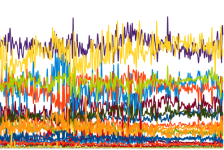no-one-particular
Atheist
It looks to me like the charge and the mass of an electron exist in two separate shells.
The principal quantum number n gives the size of the mass shell.
The quantum number l tells how much larger the charge shell is than the mass shell.
The red lines represent electrons that have the same size charge shell.
Radius of mass shell = 3^n
n=2 is 3 times larger than n=1
n=3 is 9 times larger than n=1
http://hyperphysics.phy-astr.gsu.edu/hbase/pertab/perfill.html

The principal quantum number n gives the size of the mass shell.
The quantum number l tells how much larger the charge shell is than the mass shell.
The red lines represent electrons that have the same size charge shell.
Radius of mass shell = 3^n
n=2 is 3 times larger than n=1
n=3 is 9 times larger than n=1
http://hyperphysics.phy-astr.gsu.edu/hbase/pertab/perfill.html







